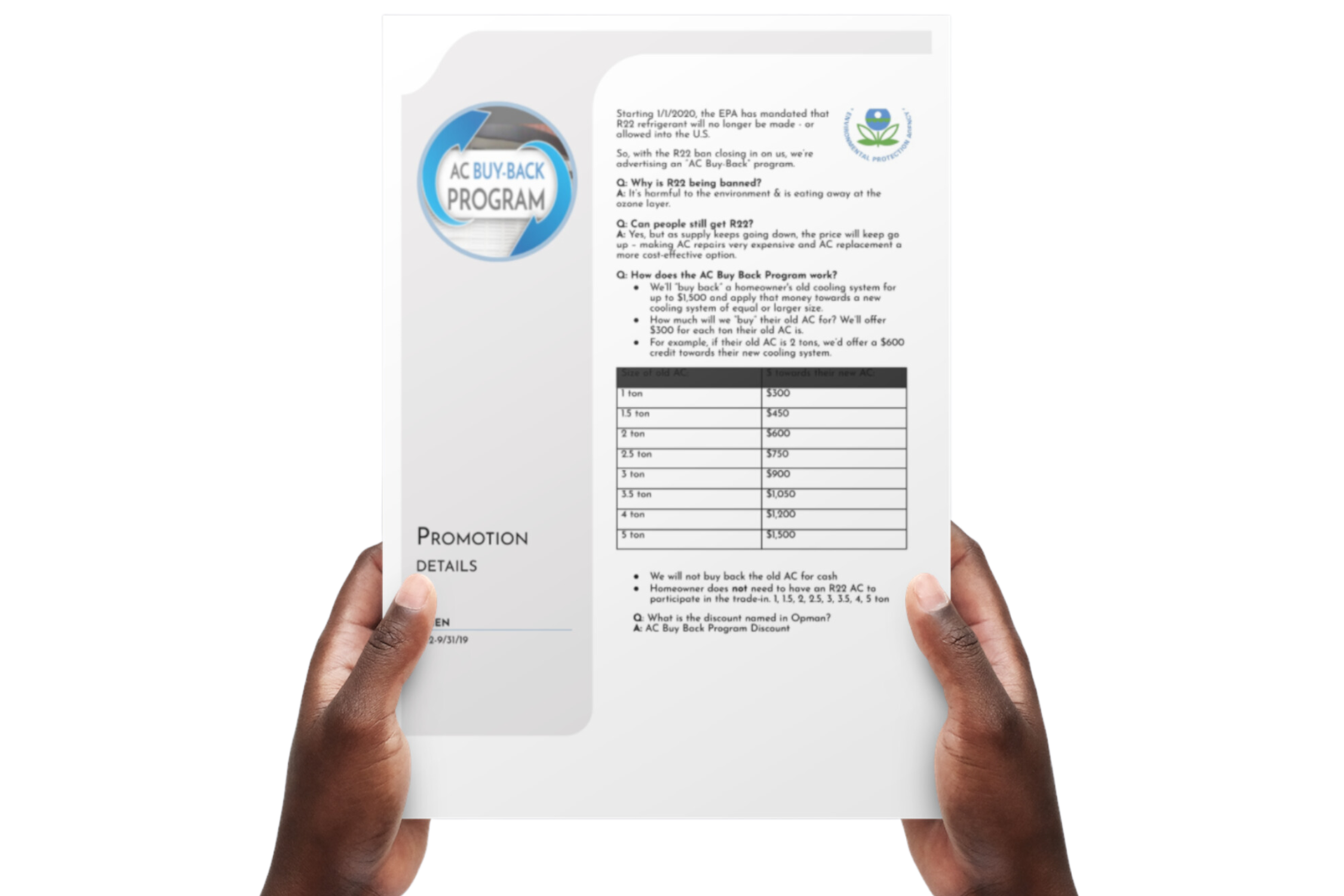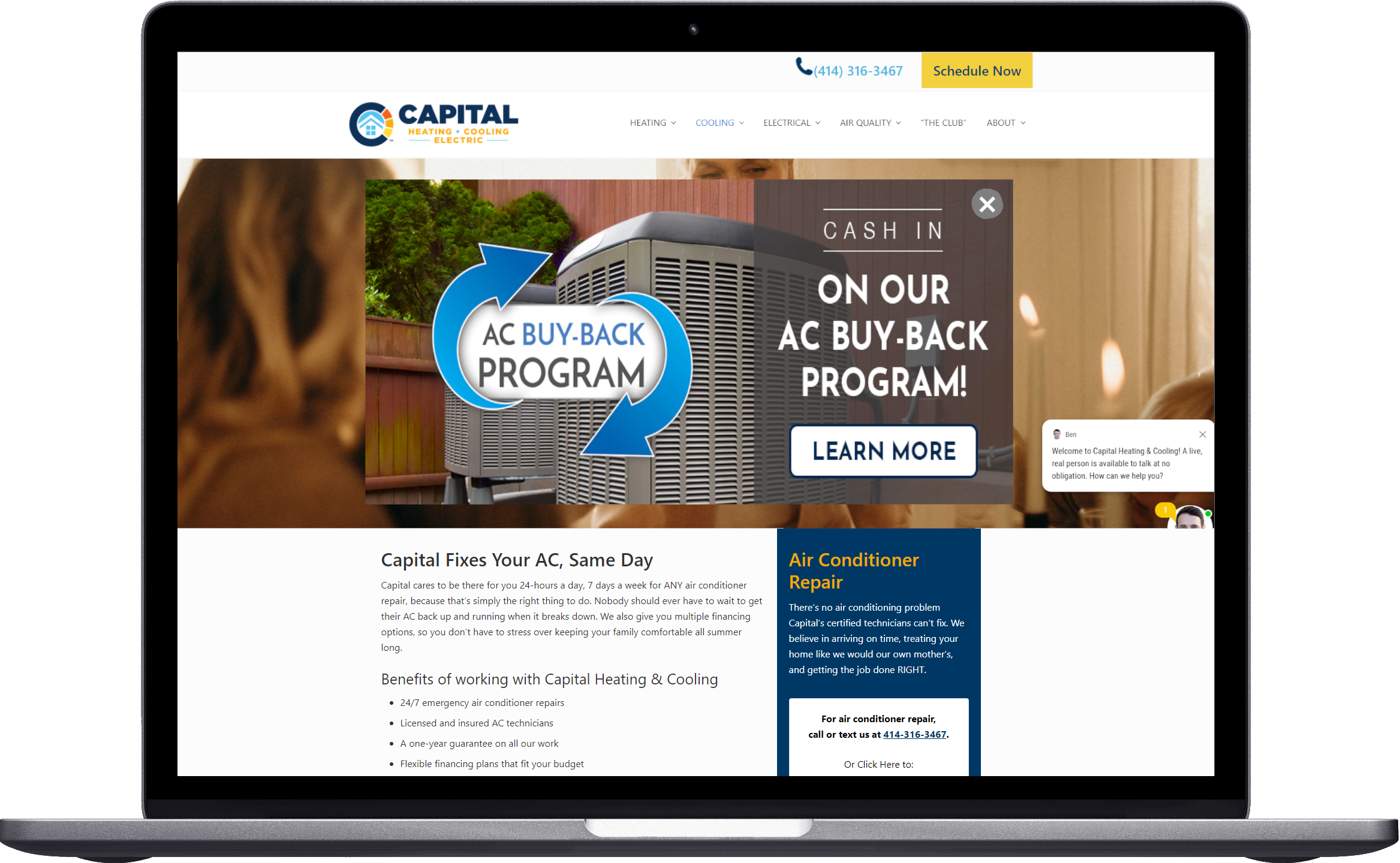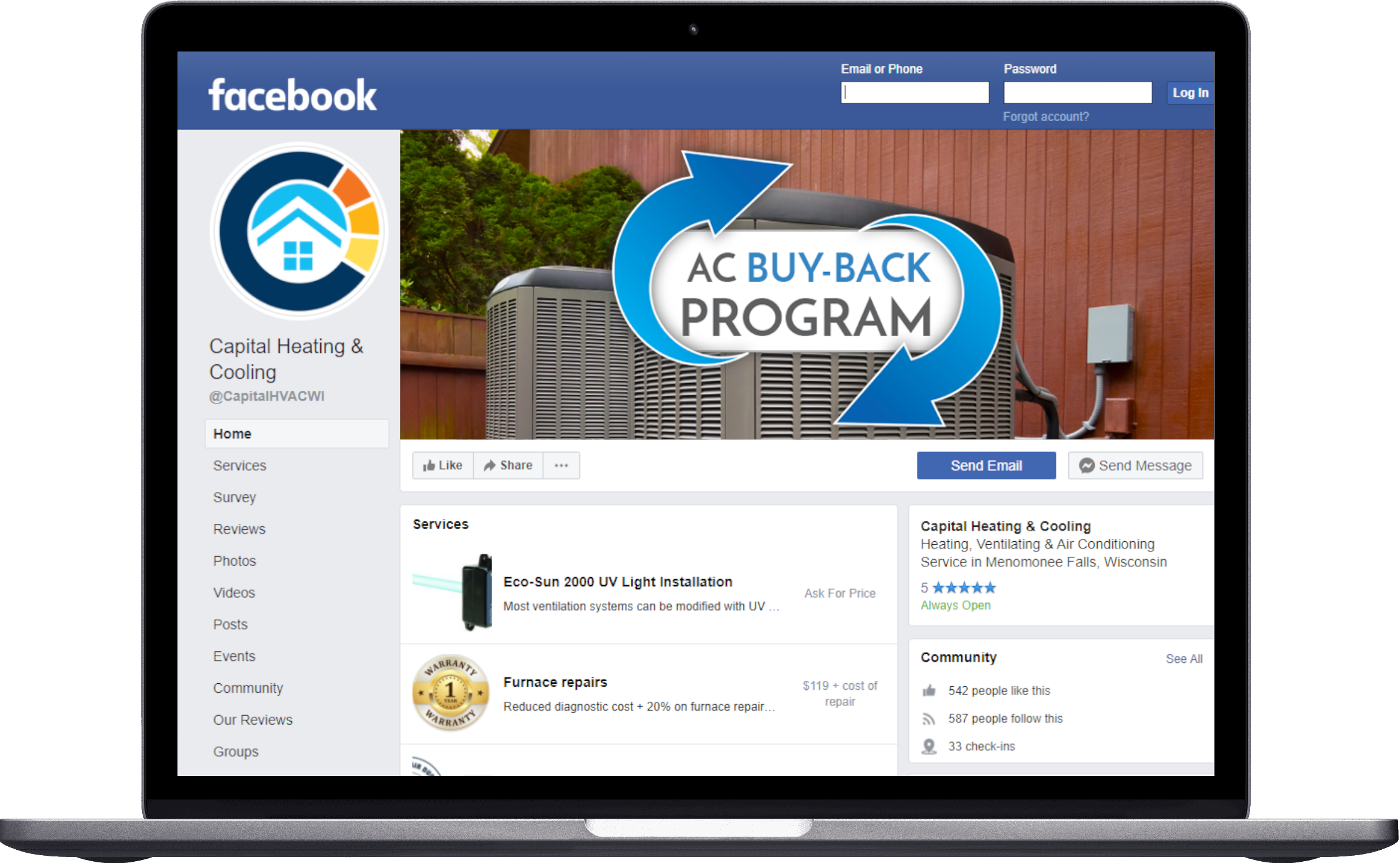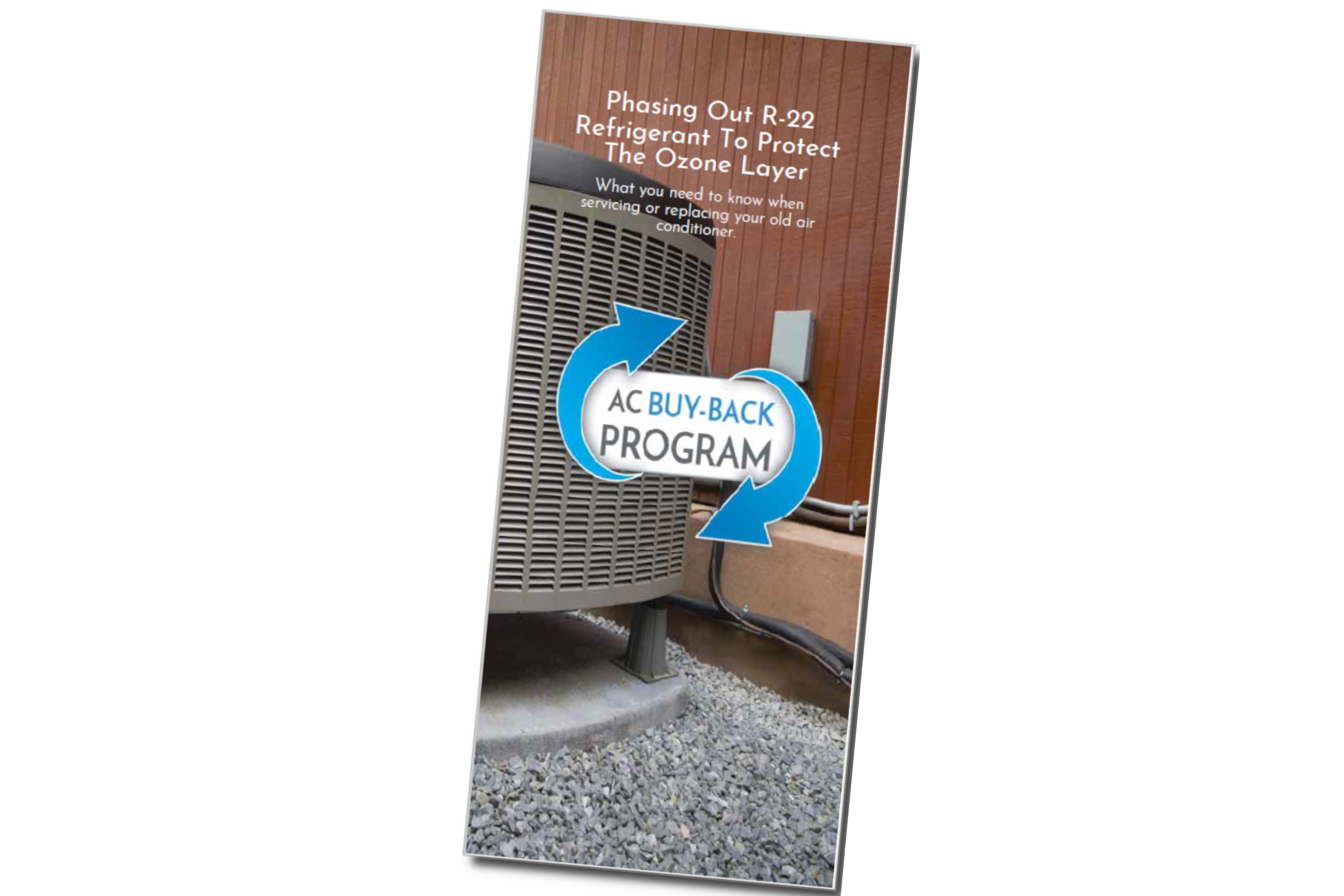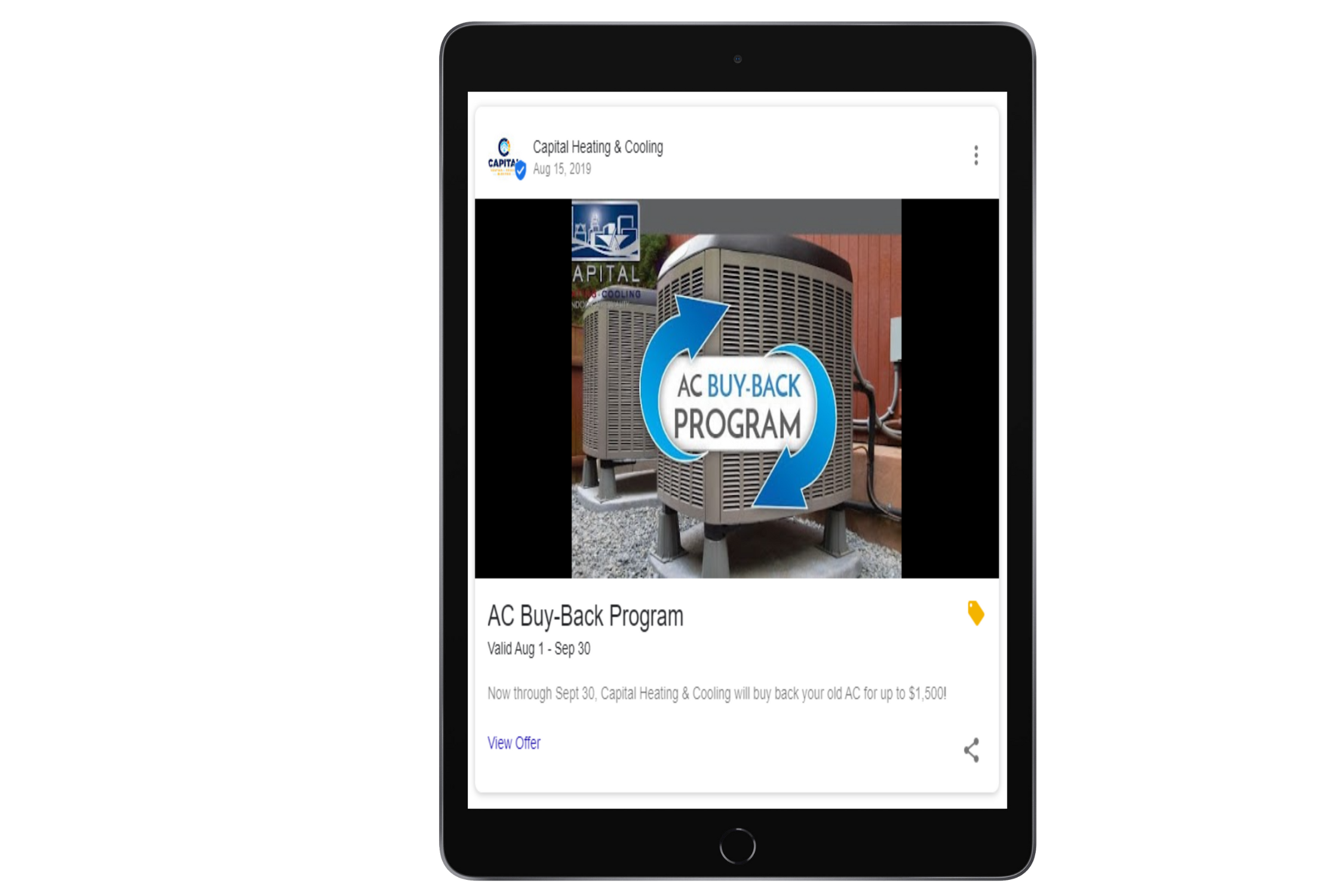Brand Identity
With homeowners increasingly seeking name-brand indoor air quality products online and demanding comparable pricing from professional installers like Capital, the company faced a significant challenge. To meet this demand while maintaining profitability, Capital devised a strategic solution: launching its private label brand of indoor air quality products with pricing not available online. First step, create a brand.
Pure Indoor Air
-
![]()
1. Strategic Planning
Go-to-market strategies are designed to align with the overall objectives of the organization, which in this specific instance was to address lagging sales through the AC BuyBack campaign.
In the HVAC domain, weather reigns supreme. If conditions are comfortable, people likely aren't buying air conditioners. It's that simple. So, what's the plan? During this phase of the GTM process, I delve into data, market trends, customer insights, the competitive landscape, and forecast potential results. It's about leveraging external factors to effectively engage target customers while crunching numbers to assess the feasibility of the plan.
During this phase, we encountered a significant industry shift: the discontinuation of R22 refrigerant in older AC units due to its harmful impact on the ozone layer. With the dwindling supply driving repair costs sky-high, we capitalized on the opportunity to promote the AC BuyBack campaign as a viable solution.
-
![]()
2. Market Segmentation
For some campaigns, the messaging or offers may need to be tweaked for different market segments. Segmenting the market based on demographics, psychographics, and behavioral attributes for each segment is vital.
The AC BuyBack campaign segmented by demographics, targeting homeowners with AC equipment over 10 years old.
While our primary goal was to drive lagging sales, we did have a tier two goal to gain market share from the millenials, our secondary audience who 52% owned homes and were twice as likely to spend discretionary income on home improvement than other generations.
-
![]()
3. Value Proposition and Offer
In go-to-market strategies, crafting compelling value propositions and offers is essential. They serve as the foundation of customer engagement, communicating unique benefits and driving desired outcomes. In a competitive market, they capture attention and incentivize action. The value proposition of the AC BuyBack campaign by Capital Heating & Cooling includes:
- Up to $1,250.00 towards a brand new AC
- Up to $2,300.00 in rebates and tax credits
- $0 Down, 0% Interest up to 60 months financing for a full system
- FREE In-Home Comfort Analysis ($295.00 value)
- FREE Indoor Air Quality Test ($189.00 value)
- FREE Parts and Labor Warranty, Up to 10 years ($900.00 value)
- An AC and Furnace tune-up ($388 value!)
- $400 Capital Cash
- FREE Air Filtration System or Germicidal UV Light (a $899.00 value)
These offers not only support sustainability efforts but also provide significant financial incentives and added value to customers, making it a compelling proposition for homeowners considering upgrading their AC systems.
-
![]()
4. Channel Strategy
Crafting a robust channel strategy is crucial for successful go-to-market campaigns. It's all about optimizing the marketing mix.
For the AC BuyBack campaign, I employed a multi-faceted approach, integrating traditional, digital, and in-store shopper marketing channels. This included mobilizing our Home Depot in-store field marketing team and utilizing targeted paid advertisements across online platforms to reach consumers where they spend the most time. Additionally, I leveraged the power of radio ads to engage with homeowners during their commute or leisure time.
Furthermore, I implemented content marketing strategies to provide valuable information and establish thought leadership in our industry, reinforcing our campaign message. Through strategic channel selection, I ensured the AC BuyBack Campaign resonated with our audience across various touchpoints, driving awareness, engagement, and ultimately, conversions.
-
![]()
5. Messaging and Content Creation
Crafting messaging and content that resonates with the audience while staying true to the brand's voice is pivotal during the go-to-market phase of campaigns. This ensures consistency and relevance, driving engagement and ultimately, conversion.
Leading the creative development and production process of all campaign assets, content, and marketing/sales communications for the AC BuyBack campaign demanded a consumer-centric approach. By delving into the mindset and needs of homeowners with aging AC units, I tailored every aspect to resonate deeply with them.
The campaign name itself, "AC BuyBack," was chosen to evoke a sense of value and opportunity for homeowners, highlighting the benefit of trading in their old units. Messaging was carefully crafted to address pain points such as rising energy costs and environmental concerns while emphasizing the financial incentives and peace of mind offered by the program. Content, from ads to landing pages, was designed to engage and educate, guiding homeowners seamlessly through the decision-making process.
This approach ensured that every aspect of the campaign spoke directly to the target audience, maximizing relevance and effectiveness.
-
![]()
6. Sales Enablement
In the sales enablement phase of the go-to-market strategy, providing comprehensive campaign details and equipping the sales team, call center staff, retail associates, and field marketing partners with necessary resources and training ensures they have the tools to effectively communicate the offer and close deals.
During my tenure at Capital, I implemented a proactive approach by furnishing the call center and sales managers with written campaign summary sheets well in advance, accompanied by group training sessions to address any inquiries. This fostered a collaborative environment and ensured seamless alignment between sales and marketing efforts.
-
![]()
7. Launch Execution
During the launch execution phase of a go-to-market campaign, meticulous planning and flawless execution are paramount. As a leader in the execution of the AC BuyBack Campaign, my role involved guiding agency partners and cross-functional teams through every step of the process. From coordinating timelines and resources to ensuring alignment with campaign objectives and brand guidelines, I facilitated seamless collaboration across departments.
By leading agency partners and internal teams through the execution phase, I ensured that all campaign elements were delivered on time, within budget, and with the highest level of quality. This included overseeing the development and production of campaign assets, managing communication channels, and monitoring campaign performance metrics.
Ultimately, my hands-on approach and strategic guidance played a crucial role in the successful execution of the AC BuyBack Campaign, driving engagement, conversion, and achieving our campaign objectives.
-
![]()
8. Performance Monitoring and Metrics
Establishing and tracking key performance indicators (KPIs) is essential for evaluating GTM strategy effectiveness.
For the AC BuyBack Campaign, the following key performance indicators (KPIs) were tracked:
- Top of Funnel Leads
- Conversions (Calls or Web Forms)
- Cost Per Click (CPC)
- Cost Per Lead (CPL)
- Total Sales
- Cost Per Sale
By closely monitoring these KPIs throughout the AC BuyBack Campaign, we were able to gauge its performance, identify areas for improvement, and optimize our marketing efforts to achieve our objectives effectively.
-
![Website Popup]()
Website Popup
-
![]()
Homepage Splash
-
![]()
Facebook Profile Image
-
![]()
Brochure (in-home & in-stores)
-
![]()
Organic Social
-
![]()
Blog / SEO content
-
![]()
Google Ads





